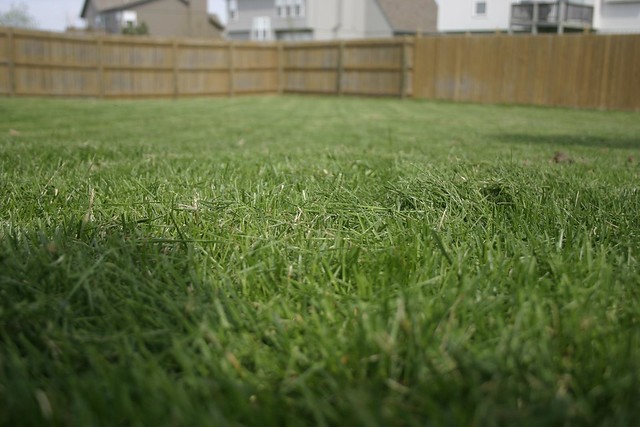Winter is just around the corner, and as scary as it sounds, you’ve only got a few weekends to get your lawn in tip-top shape before the snow flies. Unfortunately, due to the sun setting early, most people don’t have time to do yard-work after work – besides who wants to work ALL day long? Not sure where to begin with the little amount of time you have? Take a look at this list of common things you can do to improve your lawn this fall for next spring and follow the links for more how-to’s and tips.
 (Photo Source: ishane)
(Photo Source: ishane)
Give the Lawn a Final, Shorter Mow
Drop the height of your mower’s blade one notch to cut the grass shorter as you prepare for fall. Having shorter grass will prevent the buildup of dead grass come spring.
Read more here…
Add Seed
If your lawn has thin or dead grass spots (in the north) or has rye grass (in the south), be sure to overseed this fall. Be sure to spread the seed evenly and keep the areas moist at first and eventually fade out watering. Roots will grow deeper into the soil that way. Read more here…
Fertilize
Grass is a huge fan of the fall – it loves the cooler nights, adequate rainfall and the morning dew. Because of the summer damage your lawn endured with the scorching heat, it is best to feed your lawn nutrients before winter. By fertilizing in the fall, you’ll strengthen its roots and increase the nitrogen it stores for the early spring. Read more here…
 (Photo Source: WI DNR)
(Photo Source: WI DNR)
Spray Weeds that are Perennial
Now’s the time to kill those weeds that you know will come back around in the spring! Fall is the best time to spray them, provided they are still green. As they prepare for winter, they will absorb herbicides easier – so by providing a fall application, you take advantage of this by getting those weeds under control. Read more here…
Remove Thatch and Aerate
Thatch is a layer of dead grass and weeds that threatens the health of your grass. Use a power rake or vertical mower to remove thatch and then use another rake to pick up the thatch and dispose of it. By removing thatch, you can prevent disease and insect problems for your lawn. To cut down on the amount of thatch that develops, make sure to aerate your lawn every few years. It will also improve the drainage and loosen the soil. Read more here…
 (Photo Source: M. Markus)
(Photo Source: M. Markus)
Remove Fallen Leaves
Once the leaves have fallen from the trees that stand in your yard, be sure to rake them and set aside for disposal. Allowing fallen leaves to remain on your lawn can ultimately kill grasses or aid in insect and disease problems. Many cities will host leaf pick-ups where all you have to do is leave them in clumps near the street! Contact your city or village of residence to find out more about fall leaf clean-up in your area. PS, don’t forget to remove the leaves from your gutters too! Read more here…
Drain Hoses and Irrigation Systems
And when winter is about to come knocking at your door, be sure to drain your hoses and irrigation systems and turn off the water if it will freeze in your area. Read more here…
Happy Weekend!


